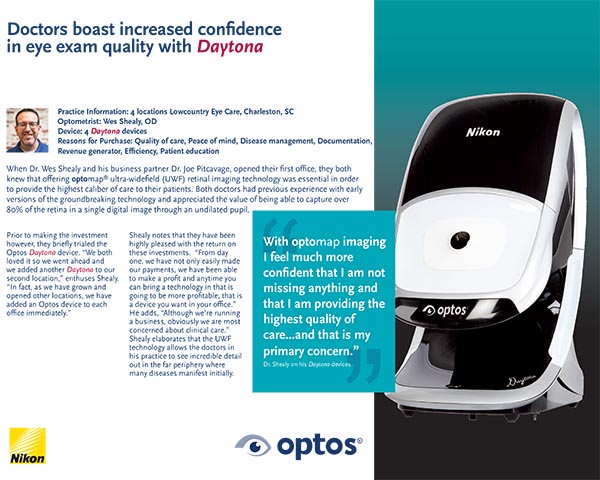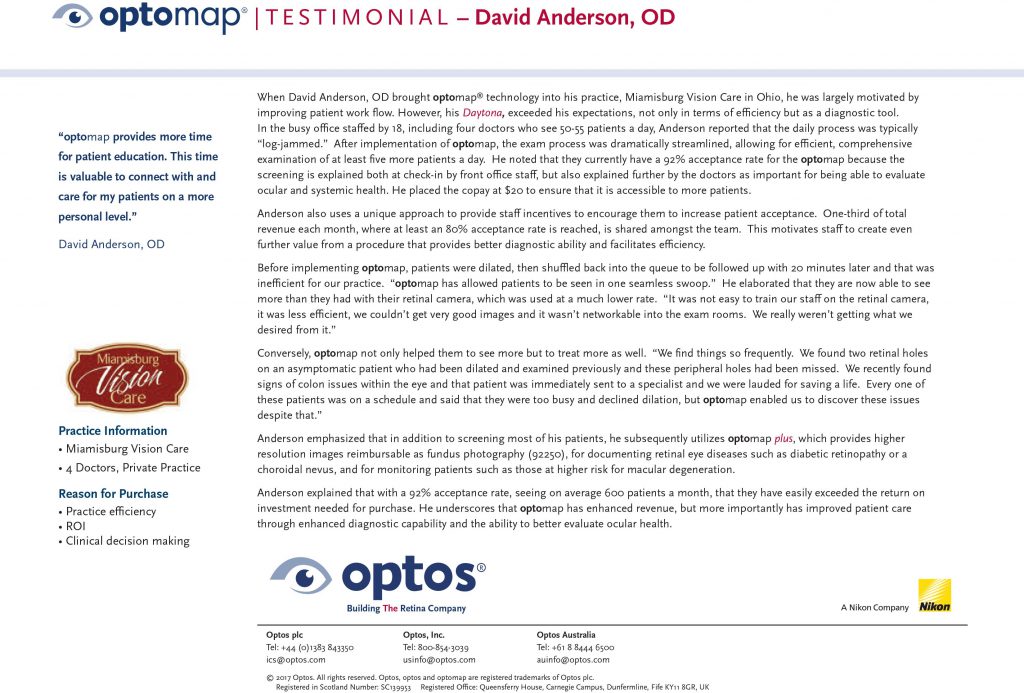Ultra-widefield (UWF™) technology supports and enables practice efficiency for eyecare professionals across all settings. The integration of optomap technology as a routine diagnostic and screening tool has shown to improve workflow and increase service capacity within a very short time, according to many eyecare professionals. optomap can facilitate timely referrals for clinical opinions, supporting earlier treatment interventions and promoting collaboration between a variety of healthcare professionals and eyecare professionals alike. These all equate to improved patient workflow, clinical accuracy, and timely diagnosis and treatment for patients. Its ease of use makes for a smooth implementation process, optomap has been found to add clinical value as documented in over 900 peer-reviewed papers. These all equate to improved patient workflow, clinical accuracy, and timely diagnosis and treatment for patients.
Practice Efficiency in Eyecare Settings
Many eyecare professionals comment on the ease of use of optomap imaging. Operating the technology requires minimal training, and images can be captured quickly and efficiently and then immediately ready to be reviewed.
When Dr. Wes Shealy and his business partner Dr. Joe Pitcavage (Lowcountry Eye Care, South Carolina) opened their first office, they both knew that offering optomap UWF retinal imaging technology was essential in order to provide the highest caliber of care to their patients. The doctors both quickly realized the improved efficiency the technology brought to their offices. Shealy explains that for those populations difficult to image, or refused to be imaged, the technology facilitates an otherwise unobtainable comprehensive retinal exam and expedites the entire exam process. “Without a doubt having optomap in our practices has improved efficiency and patient flow and we are able to see more patients. We easily went from 30 minutes per patient to 20 minutes,” explains Shealy. Each of his four (4) locations now see approximately 90 patients a day. optomap imaging also allows for a much more efficacious communication process between doctor and patient, eliminating the need to try and explain an intangible.
In an attempt to improve patient flow in his practice, optometrist David Anderson (Miamisburg Vision Care, Ohio) invested in a Daytona and found his expectations exceeded for efficiency and as a diagnostic tool.
Dr. Anderson noticed that the addition of the optomap allowed for more proficient patient service, from start to finish. Dr. Anderson and his team encourage all patients to have optomap imaging. His practice has a 92% opt-in rate, which has had a significant, positive impact on patient flow, boosting practice capacity an extra five patients per day. With this increase in patient flow, there has been a correlated rise in pathology detection, particularly in asymptomatic patients.
Although in the midst of uncertainty, eye care remains a top priority, and it’s important to continue to provide patients the technological advancements available with optomap. Increase patient throughput and practice efficiency in less than half a second. Visit our website to learn how to implement optomap in your clinical setting and increase your practice efficiency.

